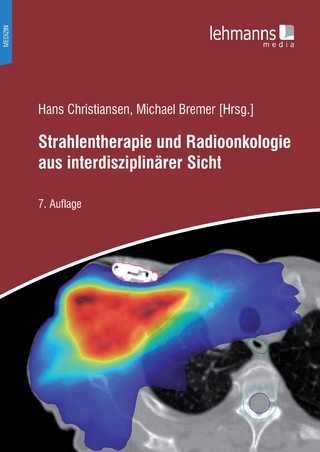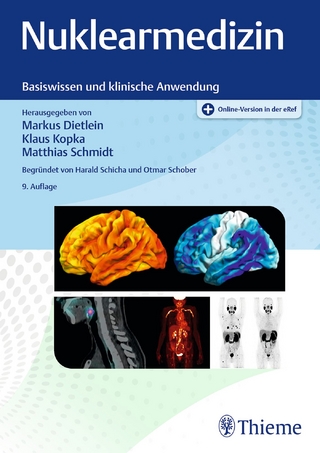
Clinical efficacy of positron emission tomography
Springer (Verlag)
978-94-010-8002-6 (ISBN)
Brain: Cerebral Vascular Disease.- Ischemic stroke studied by 15-0-lab compounds: Misery perfusion and luxury perfusion.- Ischemic disease studied with 15-0-lab compounds: Metabolic and hemodynamic disparities.- Brain glucose metabolism and blood flow in ischemic stroke.- PET studies in internal carotid occlusion patients: Base-line hemodynamic and metabolic alterations; effects of surgical revascularization and induced arterial hypertension.- Functional evaluation of extra-intracranial arterial bypasses using PET and repeated bolus administration of 15-0-lab tracers.- Respondent to Cerebral Vascular Disease: Positron emission tomography in cerebrovascular disorders: Results and perspectives.- Brain: Movement Disorders.- Changes of cerebral glucose metabolism in movement disorders.- Progressive supranuclear palsy studied by PET.- Central dopaminergic mechanisms in monkey and man studied by positron emission tomography.- Respondent to Brain - Movement Disorders: Application of PET in clinical brain research.- Summary of Discussion on Brain I.- Brain: Epilepsy and Pediatric Neurology.- Localizing epileptic foci by PET.- Clinical applications of PET: Studies of brain glucose metabolism in pediatric neurology.- Respondent to Epilepsy: The value of PET in the clinical evaluation of epileptic patients.- Brain: Dementias.- Energy metabolism and neurotransmitter function in ageing and the dementias.- PET in dementia and gliomas.- Respondent to Dementia: Value of PET in the clinical evaluation of dementias.- Brain: Schizophrenia.- Regional brain metabolism in drugfree schizophrenic patients as measured by positron emission tomography.- PET-determination of central Dl- and D2- dopamine receptor occupancy in neuroleptic treated schizophrenics.- Striatal dopamine receptors: Dose-dependent occupation by, and rapid washout of, orally given neuroleptics in humans.- Summary of Discussion on Brain II.- Heart: Angina Pectoris.- Application of positron emission tomography to the study of ischemic heart disease.- PET in the study of angina pectoris.- Investigation of myocardial receptors by PET in heart diseases.- Heart: Infarction.- Possible clinical efficacy of positron emission tomography In myocardial infarction.- The role of PET in the characterization of myocardial necrosis: Clinical problems related to the non-Q-wave infarction.- Investigation of myocardial viability after an acute myocardial infarction using positron emission tomography.- PET in the evaluation of myocardial infarction - observations in acute and chronic stage -.- Respondent to Heart: Application of PET to the study of heart disease.- Summary of Discussion on Heart.- Lungs.- Correlation of structure and function in pulmonary disease.- Lung edema: clinical efficacy of positron emission tomography.- Pharmacological studies of the lung with PET.- Respondent to Lungs: Positron emission tomography of the lungs.- Summary of Discussion on Lungs.- Soft Tissue Tumors.- Circulatory and metabolic studies in extracranial malignant tumors.- Some biological aspects of soft tissue tumors as studied by PET.- Respondent to Soft Tissue Tumors: Potential clinical value of PET in oncologyBrain Tumors.- Brain Tumors.- Positron emission tomography with 11-C methionine in brain tumors: Methionine kinetics, tumor delineation, and follow-up studies after therapy.- Dopamine receptors in pituitary adenomas and effect of bromocriptine treatment - evaluation with PET and MRI.- Respondent to Brain Tumors: Interpretation of tracer uptake in brain tumors.- Summary of Discussion on Soft Tissue and Brain Tumors.-Discussion of Summaries of Respondents.- Summary of Discussion on Strategy for the Future.- Participants.
| Reihe/Serie | Developments in Nuclear Medicine ; 12 |
|---|---|
| Zusatzinfo | 57 Illustrations, black and white; XII, 421 p. 57 illus. |
| Verlagsort | Dordrecht |
| Sprache | englisch |
| Maße | 155 x 235 mm |
| Themenwelt | Medizinische Fachgebiete ► Radiologie / Bildgebende Verfahren ► Nuklearmedizin |
| Medizinische Fachgebiete ► Radiologie / Bildgebende Verfahren ► Radiologie | |
| ISBN-10 | 94-010-8002-X / 940108002X |
| ISBN-13 | 978-94-010-8002-6 / 9789401080026 |
| Zustand | Neuware |
| Haben Sie eine Frage zum Produkt? |
aus dem Bereich


